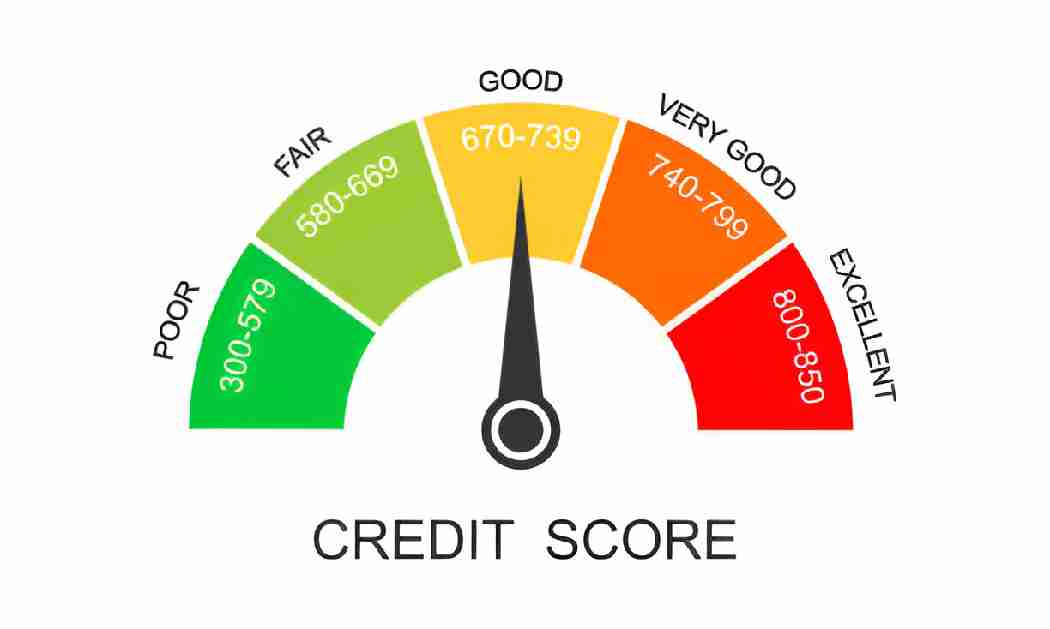Understanding Direct Loans: A Comprehensive Guide
Direct loans are a crucial component of funding for countless individuals seeking financial assistance for education, home purchases, or other significant investments. This comprehensive guide aims to clarify what direct loans are, how one can acquire them, their benefits, risks, and effective management strategies.

What are Direct Loans?
Definition and Basic Concept of Direct Loans
Direct loans are funds that are issued directly by government entities or financial institutions to borrowers, without the intermediary of a third party. These loans are prominently featured in student financial aid, most notably through programs such as the Direct Subsidized and Unsubsidized Loans offered by the federal government in the United States.
In essence, direct loans allow borrowers to receive the necessary funds to cover various expenses while ensuring straightforward repayment terms. Due to their direct nature, these loans often come with unique benefits, including lower interest rates compared to traditional loans that involve multiple lenders. This direct relationship between the borrower and the lender simplifies the borrowing process, making it more accessible for individuals who may not have extensive credit histories or who are navigating the complexities of financing their education for the first time.
Direct loans are designed to provide a safety net for borrowers, particularly students, who may face financial challenges during their academic journey. The flexibility in repayment options, such as income-driven repayment plans, allows borrowers to manage their debt more effectively as they transition into the workforce. This supportive framework is crucial in helping students focus on their studies without the overwhelming burden of financial strain.
Types of Direct Loans
- Direct Subsidized Loans: These loans are awarded based on financial need, where the government pays the interest while the borrower is in school at least half-time.
- Direct Unsubsidized Loans: Available to any eligible student regardless of financial need, these loans accumulate interest from the moment the funds are disbursed.
- Direct PLUS Loans: Designed for graduate students and parents of dependent undergraduate students, these loans cover expenses beyond what is available through other financial aid options.
- Direct Consolidation Loans: These allow borrowers to combine multiple federal student loans into a single loan with one monthly payment.
Each type of direct loan serves a specific purpose, catering to the diverse financial needs of students and their families. For instance, Direct PLUS Loans can be particularly beneficial for graduate students who often face higher tuition costs and living expenses. Additionally, the ability to consolidate loans through Direct Consolidation Loans can alleviate the stress of managing multiple payments, allowing borrowers to streamline their finances and potentially secure a lower interest rate. Understanding the nuances of each loan type is essential for borrowers to make informed decisions about their educational financing and to maximize the benefits available to them.
The Process of Acquiring Direct Loans
Eligibility Criteria for Direct Loans
To qualify for direct loans, applicants must meet certain eligibility criteria. Generally, these requirements include:
- Being a U.S. citizen or an eligible non-citizen.
- Having a valid Social Security number.
- Being enrolled at least half-time in an eligible degree or certificate program.
- Demonstrating financial need for subsidized loans.
- Maintaining satisfactory academic progress in school.
Additionally, borrowers should not be in default on any existing federal student loans, as this may impact their eligibility for new loans. It’s important for potential borrowers to review their credit history and resolve any outstanding issues before applying. Some institutions may also have additional requirements based on their specific programs, so it’s advisable to check with the financial aid office of the school you plan to attend.

Application Process for Direct Loans
The application process for direct loans typically begins by completing the Free Application for Federal Student Aid (FAFSA). This form collects financial information and helps determine eligibility for various types of financial aid, including direct loans.
Once the FAFSA is processed, students will receive a Student Aid Report (SAR), which summarizes their eligibility. Following this, the school will provide a financial aid package that may include direct loans, and students will need to accept the loan offers they wish to pursue. It’s crucial to understand the terms and conditions associated with these loans, including interest rates and repayment options. Students should also be aware of the deadlines for accepting loans, as missing these deadlines could result in a loss of funding. Moreover, many schools offer counseling sessions to help students navigate the complexities of financial aid, ensuring they make informed decisions about borrowing and managing their educational expenses.
Benefits of Direct Loans
Lower Interest Rates and Fees
One of the most significant advantages of direct loans is their typically lower interest rates compared to private loans. The federal government subsidizes these loans to make education more accessible, which can lead to substantial savings over the life of the loan. For instance, while private loans can carry interest rates that exceed 10%, direct loans often have rates that hover around 4-7%, depending on the loan type and the borrower’s circumstances. This difference can translate into thousands of dollars saved, making a considerable impact on a graduate’s financial future.
Direct loans often come with fewer fees, making them an attractive option for students and borrowers. Lower costs can result in more manageable repayment amounts, reducing the financial burden on graduates as they begin their careers. Unlike many private lenders who may impose origination fees or prepayment penalties, direct loans typically do not have such charges, allowing borrowers to focus on their education without the added stress of hidden costs.
Flexible Repayment Options
Direct loans offer various repayment options suited to individual financial circumstances. Borrowers can access several repayment plans, including:
- Standard Repayment Plan: Fixed payments over a 10-year period.
- Graduated Repayment Plan: Lower payments initially that increase every two years.
- Income-Driven Repayment Plans: Monthly payments based on income and family size.
This flexibility can significantly alleviate the stress associated with monthly payments and help borrowers maintain their financial health. For example, income-driven repayment plans can be particularly beneficial for graduates entering lower-paying fields, as they adjust payments according to what the borrower can realistically afford. Furthermore, these plans often include provisions for loan forgiveness after a certain number of years, providing an additional safety net for those who may struggle to keep up with payments.
Direct loans also offer options for deferment and forbearance, allowing borrowers to temporarily pause their payments in times of financial hardship, such as during unemployment or unexpected medical expenses. This safety feature is crucial for many borrowers, as it provides peace of mind knowing that they have options available should their financial situation change unexpectedly. Overall, the comprehensive support system surrounding direct loans makes them a favorable choice for many students navigating the complexities of financing their education.
Risks and Considerations of Direct Loans
Understanding Interest Rates and Accumulation
While direct loans generally have lower interest rates, borrowers should still be aware of how interest accumulates over time. For unsubsidized loans, interest starts accruing immediately upon disbursement, which can lead to a larger repayment amount if not managed properly. This means that even while a student is still in school, the balance can grow significantly, making it crucial to consider the long-term implications of borrowing.
It is crucial for borrowers to understand their loan terms thoroughly, as the amount of interest accrued can vary significantly depending on the type of loan and the repayment plan selected. For instance, income-driven repayment plans can help manage monthly payments based on income, but they may also extend the repayment period, resulting in more interest paid over time. Borrowers should also explore options like making interest payments while still in school to mitigate the overall cost of their loans.
Consequences of Defaulting on Direct Loans
Defaulting on a direct loan can have serious consequences. Borrowers who fail to make payments for 270 days can face:
- Loss of eligibility for additional federal student aid.
- Damage to credit score, impacting future borrowing opportunities.
- Wage garnishment or seizure of tax refunds.
To avoid default, it’s essential for borrowers to communicate with their loan servicers and seek assistance if they encounter financial difficulties. Many servicers offer deferment or forbearance options that can temporarily pause payments without the risk of default. Additionally, understanding the various repayment plans available can empower borrowers to make informed decisions that align with their financial situations. Engaging in financial literacy programs can also provide valuable insights into budgeting and managing student loans effectively.
Managing Your Direct Loans
Repayment Strategies for Direct Loans
Effective management of direct loans is essential for maintaining financial stability. Borrowers should consider creating a budget that includes their monthly loan payments and explore options such as making extra payments to reduce principal faster.
Utilizing automated payments can also help ensure timely payments and may result in interest rate reductions offered by some loan servicers.
Loan Forgiveness and Cancellation Policies
Various programs exist to offer forgiveness for direct loans under certain conditions. For instance, Public Service Loan Forgiveness (PSLF) is available to borrowers who work full-time in qualifying public service jobs and make 120 eligible payments.
Furthermore, in certain circumstances, such as total and permanent disability or the closure of a school, borrowers may be eligible for loan cancellation. Understanding these options can significantly impact a borrower’s financial future.
In conclusion, navigating direct loans requires a keen understanding of their types, processes, and management strategies. By maximizing the benefits while remaining mindful of potential risks, borrowers can make informed decisions and secure their financial futures.

FAQ’s
A direct loan is a type of financing directly provided by lenders, typically from the government, without intermediaries.
Direct loans offer benefits such as lower interest rates, flexible repayment options, and federal protection for student borrowers.
Applications for direct loans, especially federal ones, are submitted online through government portals like FAFSA for student loans.
Direct loans are typically offered to students and individuals meeting certain eligibility requirements, depending on the loan type.
The interest rate on direct loans varies based on the type of loan (subsidized, unsubsidized) and current federal rates.






